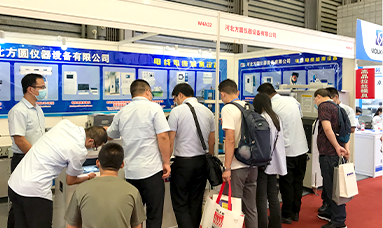tensile tester
Understanding Tensile Testers The Backbone of Material Testing
Tensile testers, also known as tensile testing machines or tensile testing equipment, are critical tools in the field of material science and engineering. These machines are designed to assess the mechanical properties of materials by applying a uniaxial load until the material fails. The information gathered from tensile testing is essential for understanding how materials behave under tension, which is vital for a wide range of industries including construction, aerospace, automotive, and manufacturing.
The core function of a tensile tester is to measure the response of a material to tensile stress, allowing engineers and researchers to determine properties such as tensile strength, yield strength, elongation, and modulus of elasticity. These properties are vital for ensuring that materials meet specified requirements before they are used in real-world applications.
One of the primary components of a tensile tester is its loading system, which can either be hydraulic, mechanical, or electromechanical. Hydraulic systems are known for their ability to exert high loads, making them suitable for testing stronger materials like metals. Conversely, electromechanical systems offer greater precision and are better for testing softer materials such as plastics and composites.
tensile tester

For a typical tensile test, material specimens are prepared in standardized shapes and sizes, which ensures consistency and accuracy in results. The specimen is then placed in the grips of the tensile tester, where it is subjected to an increasing tensile force. During this process, the machine continuously measures the load and the corresponding elongation of the material. The data collected is then plotted on a stress-strain curve, which provides a visual representation of the material's behavior up to the point of failure.
The stress-strain curve generated from the test reveals critical characteristics of the material. The initial linear portion of the graph indicates elastic behavior, where the material will return to its original shape when the stress is removed. The yield point marks the transition from elastic to plastic deformation, and the ultimate tensile strength is the maximum stress the material can withstand. Finally, the fracture point indicates the failure of the material.
The applications of tensile testing are diverse. In the construction industry, engineers ensure that materials like steel and concrete meet safety standards before use. In the aerospace sector, tensile tests help determine whether materials can withstand extreme conditions during flight. Similarly, manufacturers of everyday products utilize tensile testing to guarantee quality and reliability.
In conclusion, tensile testers play a pivotal role in material testing by providing valuable insights into the mechanical properties of various substances. As materials continue to evolve with advancements in technology, the importance of accurate and efficient tensile testing remains fundamental. Engineers and material scientists rely on these machines to ensure safety, performance, and innovation across numerous industries, underscoring the critical role of tensile testing in modern engineering practices.
-
Why the Conductor Resistance Constant Temperature Measurement Machine Redefines Precision
NewsJun.20,2025
-
Reliable Testing Starts Here: Why the High Insulation Resistance Measuring Instrument Is a Must-Have
NewsJun.20,2025
-
Flexible Cable Flexing Test Equipment: The Precision Standard for Cable Durability and Performance Testing
NewsJun.20,2025
-
Digital Measurement Projector: Precision Visualization for Modern Manufacturing
NewsJun.20,2025
-
Computer Control Electronic Tensile Tester: Precision and Power for the Modern Metal Industry
NewsJun.20,2025
-
Cable Spark Tester: Your Ultimate Insulation Assurance for Wire and Cable Testing
NewsJun.20,2025
 Copyright © 2025 Hebei Fangyuan Instrument & Equipment Co.,Ltd. All Rights Reserved. Sitemap | Privacy Policy
Copyright © 2025 Hebei Fangyuan Instrument & Equipment Co.,Ltd. All Rights Reserved. Sitemap | Privacy Policy
